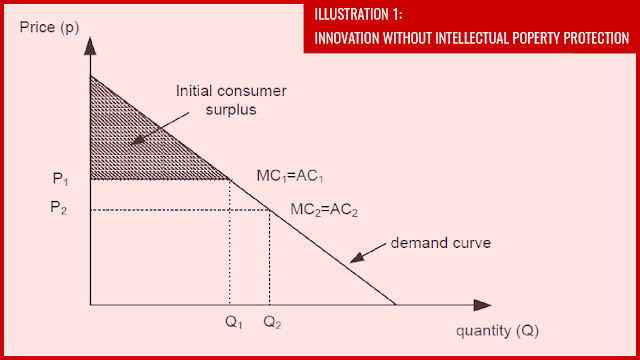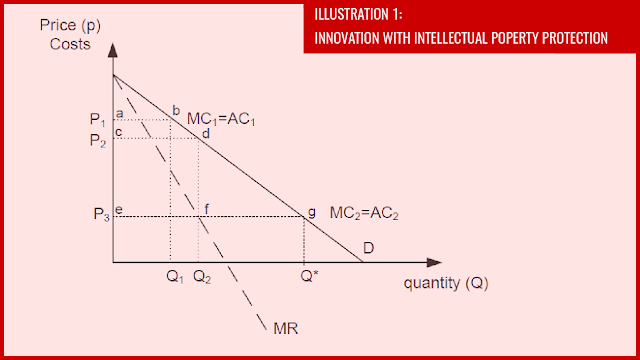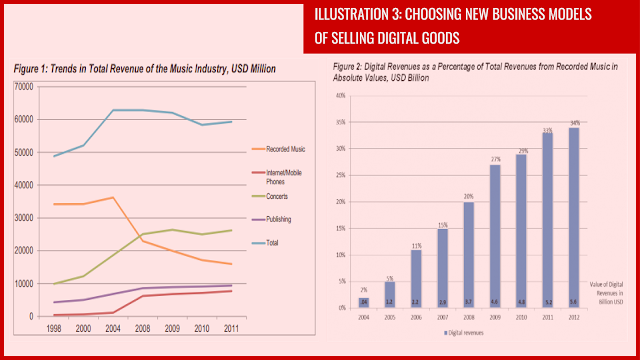Economics | Piracy in Digital Economy | #economics
https://global-fintech.blogspot.com/2016/04/economics-piracy-digital-economy.html
Piracy has been around for a while. The concept has existed since ancient times. Piracy has preserved its originally negative connotation until today, being infused with the idea of robbery and cruelty. Now, if we follow the metamorphoses that it has gone through in economic history, especially as far as industrial economics is concerned, we shall discover that not only piracy has preserved its romantically criminal tune, but it has also become an even more controversial issue today than it was several centuries ago. Especially what concerns economics.
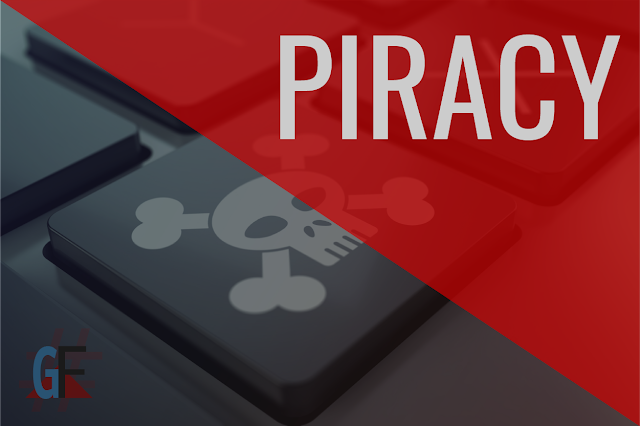 |
| Piracy and Economics | Piracy & intellectual property in digital economy | Digital economy for technology, r&d and innovation |
Definition of the modern piracy
Today, the word piracy is no longer an anachronism. Apart from several thousand crazy pirates who still rob ships at high sea somewhere near Somali, pirates have changed their jobs switching to comfortable computer desks. They no longer rob ships, but steal intellectual products (which are in the majority of cases digital products). Indeed, today we define piracy as violation of intellectual property rights. More precisely, it is illegal use (or misappropriation) of information (in form of a image, text, piece of music etc.) which has been created by another person and legally estimated as his or her intellectual property which has its value and can be regarded as a tradable good.
The new pirates are no longer heroes of adventure books and poems. Piracy has become more prosaic. Centuries ago, long before our society entered the digital age, hardly could the then pirates predict that in future their name would be used to designate fat and autistic geeks finding their life satisfaction in hacking into others’ intellectual property and spreading it around the globe. Doing that for different psychological and phylosophical reasons, pirates naturally affect different countries' economies and legislations.
The pirates of the past would dismay at the idea that their name would be adopted even by a group of European politicians, and that in form of the so-called Pirate Party (Piratenpartei), having neither any definite structure, nor a plausible political programme. Those pirates are represented by narrow-minded and unshaven youngsters lacking both life and political experience. In this post, however, we shall concentrate on the economic, not political, piracy. We are going, more precisely, to discuss the legal and economic effects of piracy in form of infringement of intellectual property rights.
 |
| Piracy today |
What kinds of intellectual property can be pirated in digital economy?
Almost any digital good can be stolen or illegally copied by pirates. From music, videos and software applications to digital books and manuals. The most efficient digital producers are among the most popular victims. Software companies such as Microsoft and Adobe, video tutorial platforms like Lynda.com or Educator.com, and finally music and film producers are pirated every day. If you do not believe me, just go to one of the most well-known pirate digital sharing websites like Piratebays or Kickass and you will see yourself.
Speaking about piracy we should distinguish between commercial piracy and end-user piracy. The commercial piracy aims at stealing copyrighted intellectual property for its commercial use. The end-user piracy is done for personal use of pirated products. In this post, we are talking about the end-user piracy in the majority of cases.
Speaking about piracy we should distinguish between commercial piracy and end-user piracy. The commercial piracy aims at stealing copyrighted intellectual property for its commercial use. The end-user piracy is done for personal use of pirated products. In this post, we are talking about the end-user piracy in the majority of cases.
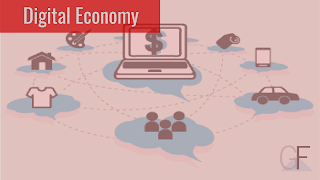 |
| Digital economy and digital technologies |
Piracy in digital economy: how digital technologies affect piracy
In economics, the first models of piracy were related to copying books from libraries. Indeed, that was and remains to be the sin of many language schools. 'Copying kills books', I read once in a flyer and passed it on to my English teacher. In a few minutes when I was supposed to receive a text for rendering, she did not give me my copy saying, 'Copying kills books, do you remember?' That was how it started.
The same could be applied to the music and film industries. The more difficult it was to make a copy of a CD (or an audio cassette) or a DVD (or a video cassette) correspondingly and the lower quality the copy is, the fewer people would acquire a pirated version of a music album or a film.
Piracy before digital economy
Indeed, photocopying is supposed to decrease the publisher's profits. That is why the price for which the publisher sells books to libraries is much higher than the price of books in book shops. The logic is the following: the more books the publisher sells to the libraries (with high reproduction quality and high marginal costs), the more profit he gets. That started, however, to change with the development of digital technologies.The same could be applied to the music and film industries. The more difficult it was to make a copy of a CD (or an audio cassette) or a DVD (or a video cassette) correspondingly and the lower quality the copy is, the fewer people would acquire a pirated version of a music album or a film.
Piracy and digital technologies
The new piracy with the new pirates appeared when the concept of New, or as it is also called, Digital or Web economy came. It can be understood from the different denominations of digital economy that the today's piracy is the consequence of digitalisation which reduced the marginal cost of digital products almost to zero and enabled quality-preserving copying.
Some ten or twenty years ago people believed seriously only in material goods. No one would seriously consider such notions as intellectual property, for only in rare cases information was perceived as a good which can be traded. In the majority of areas, information was an addition to material goods and one was sceptical when someone would bring up a notion of information good.
But then everything changed. Internet and other digital technologies became omnipresent and life changed once and forever. Most of the material products such as books, music and films were digitalised. The value of information has increased, with the price and property rights being attributed to digital goods. The epoch of digital economy started.
Digital technologies 1.0, 2.0 and etc. made the transition from industrial to post-industrial society possible by encompassing the entire economic life. The so-called IT-infrastructure wired private and working life all the way through, allowing for wifi access almost everywhere, virtual social life in social networks etc. How it affected our society will be left beyond the scope of the blogpost. What matters is that the world of economics went online. E-business connected office workers with e-mails, virtual calendars and digital databases, enabling them to work on the distance. E-commerce gave people an opportunity to do their shopping on the internet without leaving their homes. Thus, today we can talk about the internet of things, with information priced materially.
 |
| Intellectual property rights protection | Innovation and r&d |
R&D, innovation and intellectual property protection in digital economy
Earlier, we have already mentioned the concept of intellectual property which refers to legal rights on intellectual non-material products (inventions, business methods, industrial processes, chemical formulae, unique names etc.). The concept of intellectual property has become more important at the end of the 1990s when society had already made the first steps towards digital economy. It was at that time that the notions of patent, copyright, trademark and trade secrets came into broad use. At that time such companies as Microsoft and Apple already wanted to protect their ideas and technologies. In the same way as it was prohibited to steal material things, legislators tried to prohibit stealing information goods. Let's first see how intellectual property protection has contributed to the innovation and r&d market. We shall extend the concept of intellectual property protection to digital technologies and products in general later.
Intellectual property protection of R&D and innovation in economics
We shall start by a perfect competition market without intellectual property protection. Even without intellectual property protection, innovation of any kind is supposed to decrease the firm's costs, hence reducing the price and increasing the supply of the good on the market, be that a normal material good, a technology (r&d, innovation etc.) or a digital good. In our case, we presuppose the absence of fixed costs (marginal costs are equal to average costs) and a perfect competition market which implies perfect information i.e. the absence of intellectual property protection.
With intellectual property protection, the producer acquires a monopoly on his intellectual property (digital goods and any other sorts of r&d and innovation).Thus, he can set a higher price as compared to the marginal cost, and restrict the quantity produced. The price is lower though than in the previous case. If intellectual property protection expires or becomes lower, the price becomes lower as well.
Having seen how intellectual property protection affects innovation, r&d and digital technologies, we can extend that theory to all products in digital economy. Now, let's see how intellectual property protection legislation has evolved until nowadays and which forms of intellectual property protection exist.
Evolution and forms of intellectual property protection
The first legislation protecting intellectual property appeared in the US. The concepts mentioned above, namely patent, copyright, trademark and trade secrets were developed and delimited in order to protect people’s intellectual property and encourage the advancement of digital technologies.
Whereas the copyright protected different types of creative products such as design, literary and artistic works and lasts up to 70 years, the patent lasts shorter (up to 20 years), but it has a stronger and broader form of protection and thrusts its power over production technologies. The trademark protects brand names and logos helping the companies to hold their grounds and protect their authorship. A trade secret is a method which needs to be protected to assure the company’s exclusive rights on its methods, formulae and technologies.
The duration of the patent can be only finite. Otherwise, it is no longer welfare maximising (see the chapter about the static and dynamic efficiency).
The duration of the patent can be only finite. Otherwise, it is no longer welfare maximising (see the chapter about the static and dynamic efficiency).
In most cases violation of intellectual property is prosecuted. On the international level, GATT agreements and EU directives are supported and applied by national legislations of each country. However, as far as piracy itself is concerned we must acknowledge that no more or less common legislation has been adopted which finds its reflection in the spread of illegal digital sharing all over the world. Indeed, torrent uploading and downloading, for example, is a type of piracy where each country has its own approach and some countries have no pre-emptive measures at all.
Following the reinforcement of intellectual property protection in the 1980s as well as the extension of the concept, there was a patent explosion in the 1990 - 2000s. There could be different reasons for that tendency. First and foremost, the patent offers secrecy and the monopoly position for its owner. Secondly, the patent can be seen as a certificate of quality and, consequently, used as a 'trading instrument'. However, due to the fact that all sorts of inventions (no matter what kinds of inventions they were and what quality they offered) we patented. That reduced the general value of the technology and innovation. Moreover, producers themselves grew sceptical as they could see that most patents could be invented around, are expensive and the information should be disclosed before being patented. Thus, there appeared proponents of either no patents at all or the so-called patent portfolios which aim at different aspects which are to be kept in secret, at the same time.
Following the reinforcement of intellectual property protection in the 1980s as well as the extension of the concept, there was a patent explosion in the 1990 - 2000s. There could be different reasons for that tendency. First and foremost, the patent offers secrecy and the monopoly position for its owner. Secondly, the patent can be seen as a certificate of quality and, consequently, used as a 'trading instrument'. However, due to the fact that all sorts of inventions (no matter what kinds of inventions they were and what quality they offered) we patented. That reduced the general value of the technology and innovation. Moreover, producers themselves grew sceptical as they could see that most patents could be invented around, are expensive and the information should be disclosed before being patented. Thus, there appeared proponents of either no patents at all or the so-called patent portfolios which aim at different aspects which are to be kept in secret, at the same time.
Static and dynamic efficiency
Intellectual property protection is aimed, on the one hand, at providing the incentives for digital producers and r&d companies to innovate and create new digital technologies (dynamic efficiency) and, on the other hand, at promoting the diffusion of technology and using the result of innovation. In most of the cases it is the government that finances the protection of intellectual property. Thus, it is the government that chooses the length of intellectual protection.
The government faces a trade-off between static and dynamic efficiency. For patents, for instance, the static efficiency, granting free access to everyone and eliminating the deadweight loss, the government raises its funds from taxation, which may create distorsions on different levels, whereas it is the user who pays for the patent in the other case. Dynamic efficiency, however, gives birth to uncertainty about the costs and benefits of research. By that we mean that subsidising might give too little or too much incentives for innovation.
The government faces a trade-off between static and dynamic efficiency. For patents, for instance, the static efficiency, granting free access to everyone and eliminating the deadweight loss, the government raises its funds from taxation, which may create distorsions on different levels, whereas it is the user who pays for the patent in the other case. Dynamic efficiency, however, gives birth to uncertainty about the costs and benefits of research. By that we mean that subsidising might give too little or too much incentives for innovation.
Information as a public good and models in industrial economics
Generally, information is considered to be a public good. By that we mean that everyone is supposed to have equal access to information. Consequently, there should be neither rivalry nor exclusion when people access information. However, as digital economy was strengthening its positions, some of the information started to be considered as a market (tradable) good instead. For instance, that concerns films in any of digital video formats. Technology has made it possible to easily copy and transfer films in form of digitally encoded information. In digital economy, that kind of information is seen as a good which can and even must be traded for money. Nevertheless, in real life most of digital products that are supposed to be sold and bought are pirated, that is to say used without paying for them and shared. The latter phenomenon is called file-sharing. No, in that situation we cannot apply the proverb Sharing is caring. Here it would be better to say Sharing is piracy.
In economics, there are different points of view about piracy. At the dawn of post-industrial society piracy more than ever was regarded as a ‘killer’ of digital producers. It caused, namely, the phenomenon of underprovision of originals. While copying was preferred by a large number of people, it was considered to lead to lower profits for producers who were obliged to reduce the level of quality in order that the originals were preferred to copies. Only when the copyright protection was increased, was it profitable for the producer to increase the price because due to a higher level of the copyright protection copying also became more expensive. In the short run piracy increases social welfare while decreasing producers’ surplus. In the long run, however, the effects of piracy are not clear for both parties.
As it has already been mentioned, with digitalisation the marginal costs of producing and copying digital goods have almost reduced to 0. That changed the situation a little bit. The quality did not change much because of copying. Therefore, the producers had either to change their supply chain or to change their ways of production in order to keep the prices enabling them to make profits. Alternatively, they could also choose various pricing strategies in order to curb piracy as far as it was possible.
Anti-piracy pricing strategies
It is clear that piracy cuts the price of intellectual property goods. However, not always does it reduce the profit of the digital producer to 0. There are certain pricing strategies which can help digital producers as well as innovation and r&d companies to survive (economic assumption: provided that consumers are heterogenous with respect to their willingness to pay). They should be chosen based on the attractiveness of the copy and the general intellectual property enforcement environment inside the country.1. Blocking piracy:
The producer can block piracy completely by making the price as low as that of the copy, thus eliminating the piracy threat. He may also invest in his property protection packages to get an alround insurance.
2. Deterring piracy:
The producer can invest in his/her intellectual property protection, thus making it more expensive for the pirate to counterfeit his/her intellectual property.
3. Accomodating piracy:
The digital producer may choose (especially in case the state does not provide a formidable intellectual property protection framework) to accomodate piracy, i.e. set a high price and tolerate piracy.
Is piracy always bad? Various effects of piracy
With time the attitude to piracy changed and that economic phenomenon started to be analysed from different sides. It appeared that piracy was not always destructive. Moreover, in some cases it was even considered to be a marketing trick to expose the company’s influence on potential consumers by giving them product samples for free. That is often referred to as sampling. In addition to this, piracy also produced some network effects and the loss in profits was compensated by increased popularity of the product. Moreover, piracy tended to increase the demand for the pirated products.
On the other hand, there was still the substitution effect. Apparently, the person who had used a pirated copy would never use the original, as a rule. The effects mentioned above could also be perceived as negative unless the copyright protection is strong enough.
Another possible way-out for digital producers would be to choose other ways of selling their products. In case of sound production, for instance, more live performances instead of digital products (CDs etc.) have made the profits of producers more optimistic.
Another possible way-out for digital producers would be to choose other ways of selling their products. In case of sound production, for instance, more live performances instead of digital products (CDs etc.) have made the profits of producers more optimistic.
So, maybe it is high time that producers started thinking about more innovative ways of selling their products?
1. To have a visual impression of my post and to get more details, I invite you to have a look at my presentation below where you will find more examples and illustrations.
2. If you are interested in the scientific and mathematical side of the question, you are very welcome to consult my paper on piracy.
